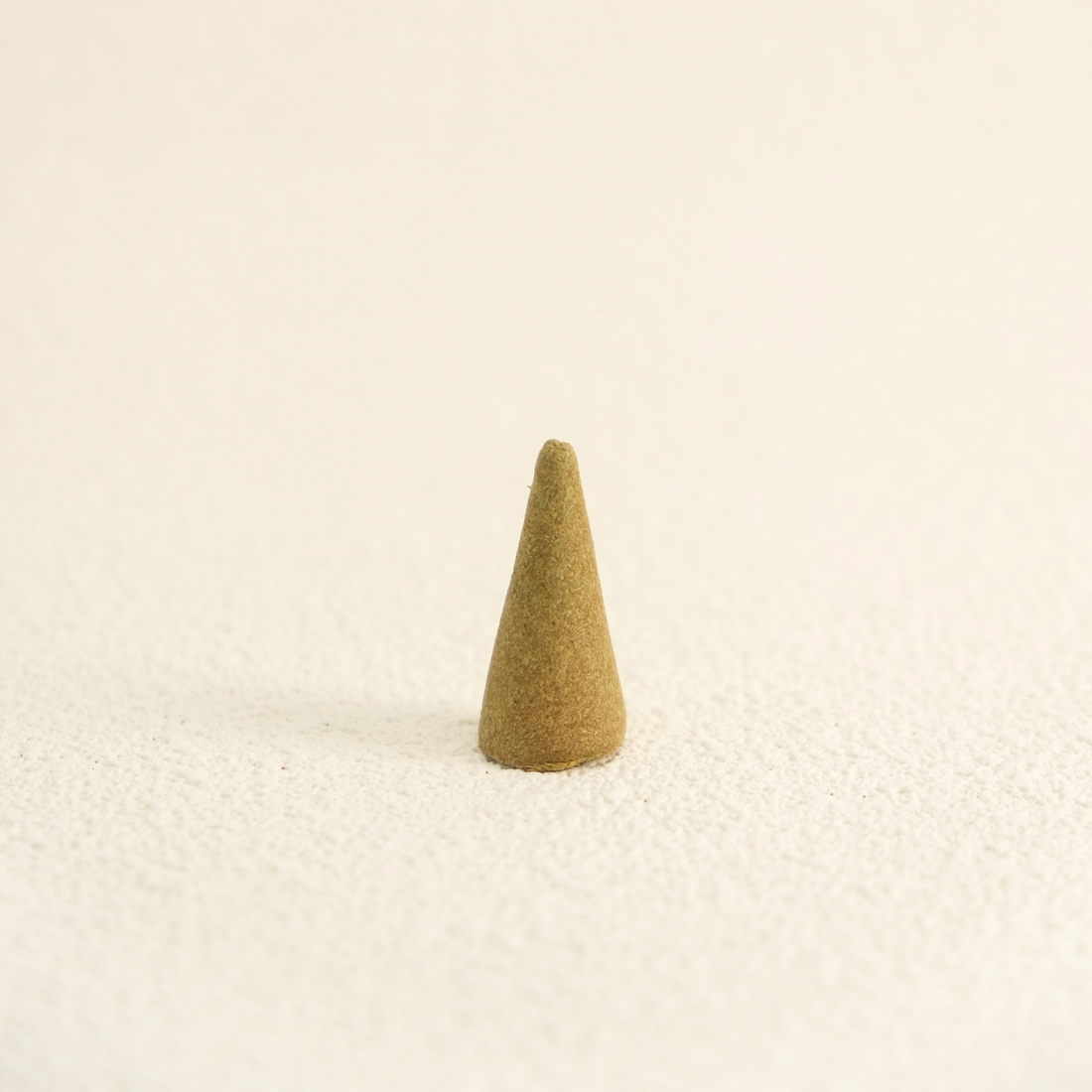
Incense Cones vs Sticks: A Complete Guide to Their Differences
Share
Incense cones and stick incense are two of the most popular forms of incense worldwide. While both serve the same purpose—releasing fragrant smoke—they differ in shape, burn style, production process, smoke intensity, and fragrance experience.
Understanding these differences will help you choose the right incense for your rituals, meditation, or daily relaxation.
What Is an Incense Cone?
An incense cone is a small cone-shaped piece made entirely from powdered aromatic materials and a natural binder.
Unlike incense sticks, which often have a bamboo core, cones are coreless and fully combustible. They burn vertically from the pointed tip downward, releasing dense, concentrated smoke.
By contrast, incense sticks are slender and can be either:
- Coreless (common in Japanese varieties), offering a pure fragrance.
- With bamboo core (popular in Indian incense), where incense paste is rolled around a thin stick.
These structural differences influence how each type burns and how the fragrance is experienced.
How Incense Cones and Sticks Are Made
- Incense Cones: Made by mixing ground woods, herbs, or resins (like sandalwood, cedarwood, or Palo Santo) with a plant-based binder and water. The paste is molded into cones and dried. They burn completely, leaving minimal ash.
- Incense Sticks: Produced either by rolling paste around a bamboo stick or shaping it into thin, coreless sticks. Coreless versions burn more gently, while bamboo-based ones may add a subtle woody undertone.
Smoke and Burning Behavior
One of the most noticeable differences is smoke production.
- Cones: Burn from the tip down, creating a chimney-like effect that produces dense, rich smoke. The fragrance is immediate and powerful.
- Sticks: Burn along a thin horizontal path, releasing a lighter, more diffused smoke that lingers in the air more subtly.
This makes cones better for quick, intense rituals, while sticks are ideal for calm, extended sessions.
Burn Time and Aroma
- Incense Cones: Burn quickly, usually 5–25 minutes depending on size. Best for energy cleansing, short meditations, or quick rituals.
- Incense Sticks: Last longer, often up to 45 minutes or more. Perfect for yoga, reading, or background fragrance during daily routines.
Even when made from the same ingredients, cones tend to smell stronger due to their higher burn temperature, while sticks provide a more nuanced and gentle scent profile.
Natural Binders in Incense
Binders are crucial for burn quality:
- Nanmu powder: Fine-grained, fragrance-free, low smoke. Used in high-quality incense.
- Phellodendron powder: Herbal aroma, produces more smoke, often used in therapeutic or oud-based cones.
The choice of binder influences both the cleanliness of the burn and the clarity of fragrance.
Final Thoughts: Which Should You Choose?
- Choose Incense Cones if you want a fast, powerful aroma with rich smoke for short rituals or energy shifts.
- Choose Incense Sticks if you prefer a longer, gentler burn with subtle, evolving fragrance for meditation or daily use.
Both have unique strengths, and choosing high-quality incense ensures a better experience rooted in centuries-old traditions.
✨ Try It Yourself: Experience the calming intensity of incense cones made with clean, natural ingredients and no fillers.
👉 Explore our handcrafted incense cone collection —
and handcrafted incense sticks inspired by traditional practices from East and West, designed to elevate your rituals and mindful living.

